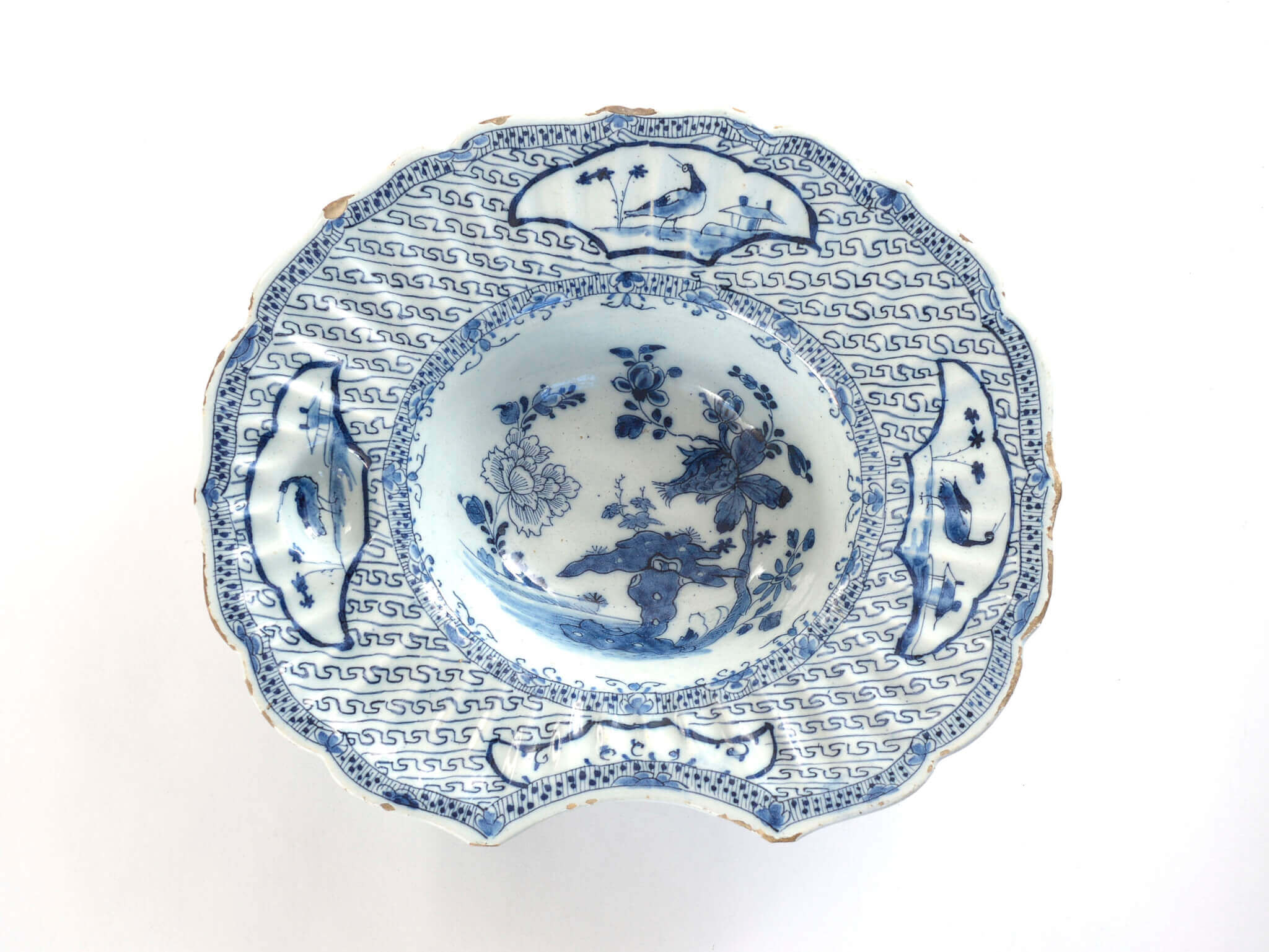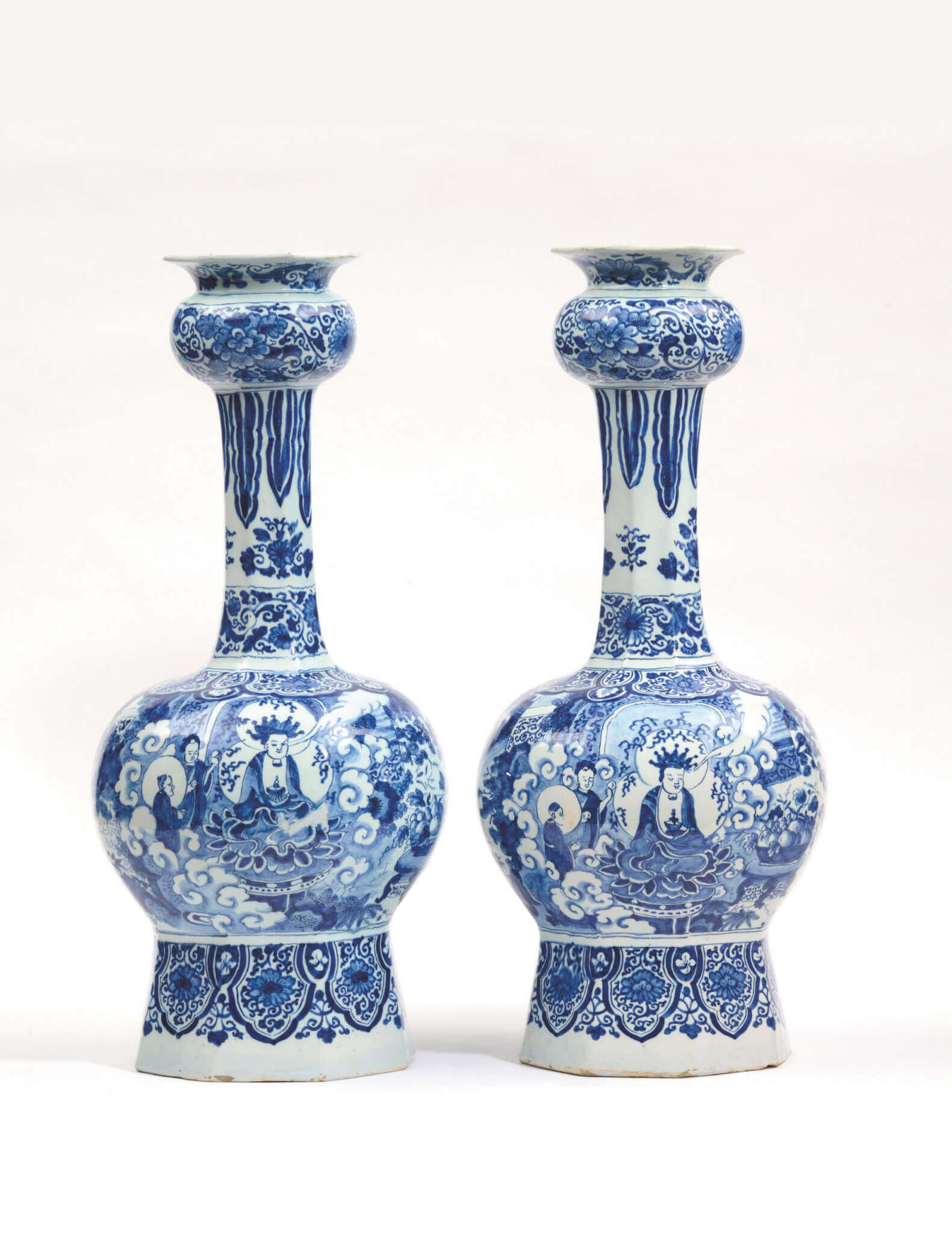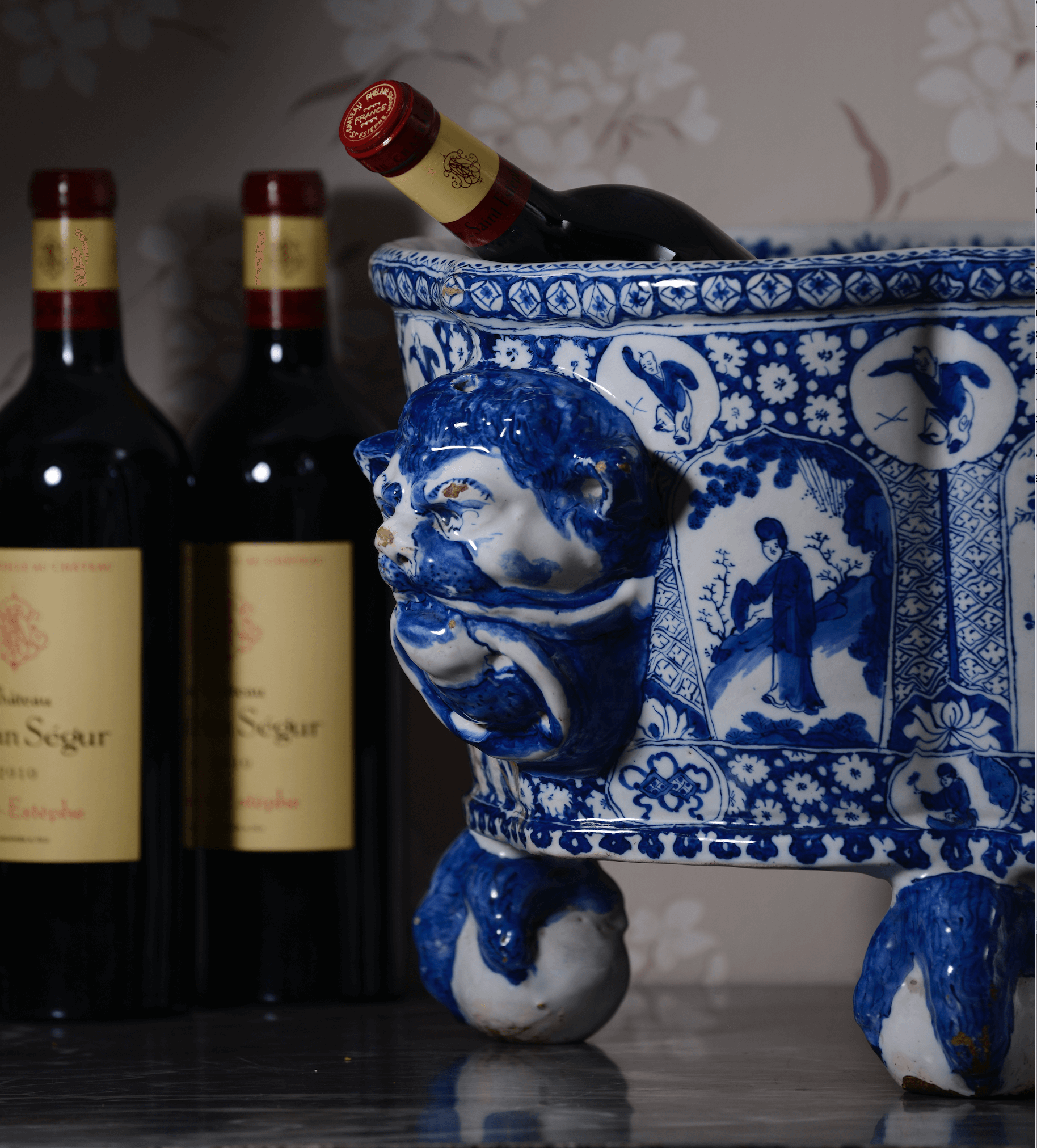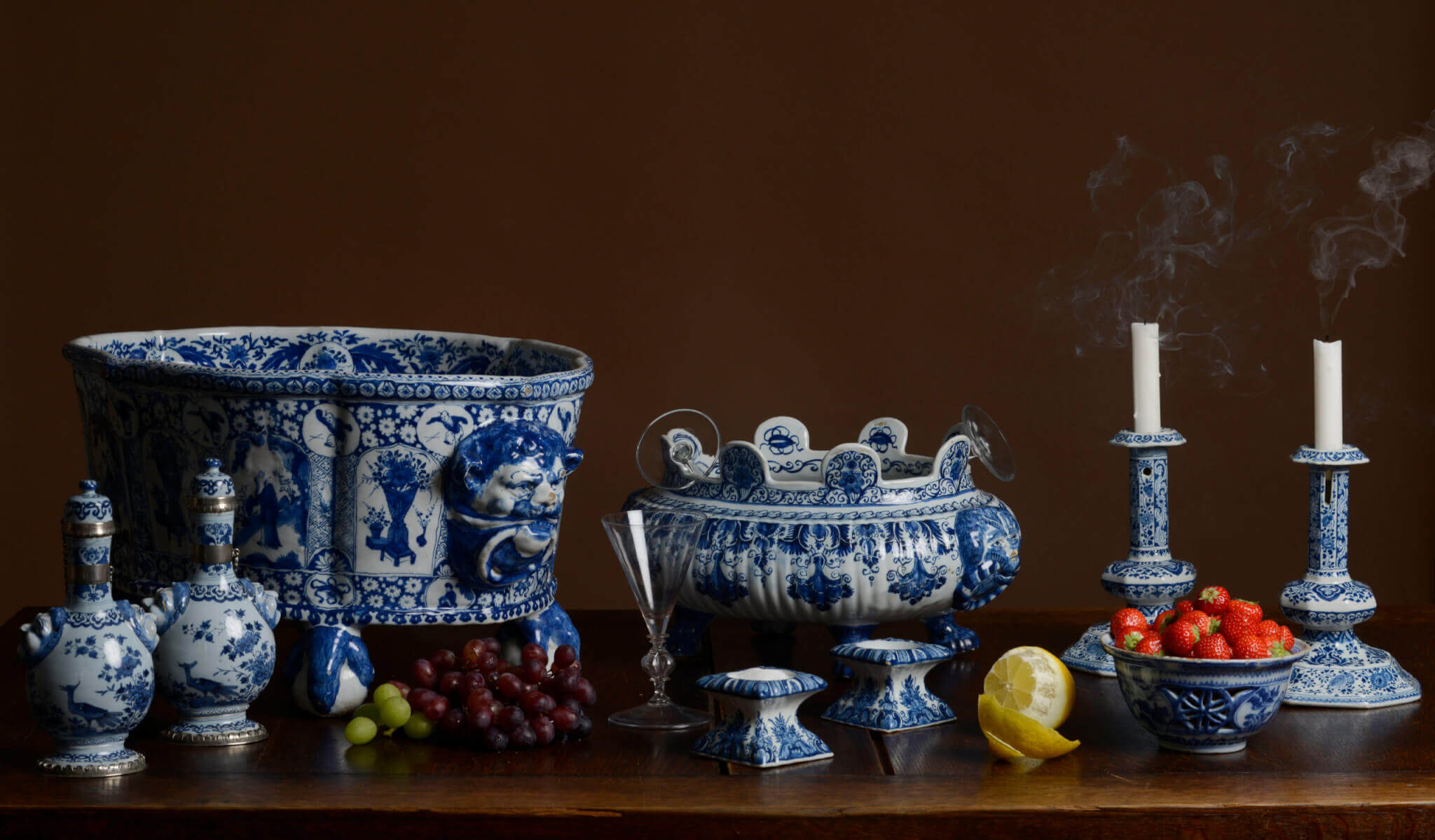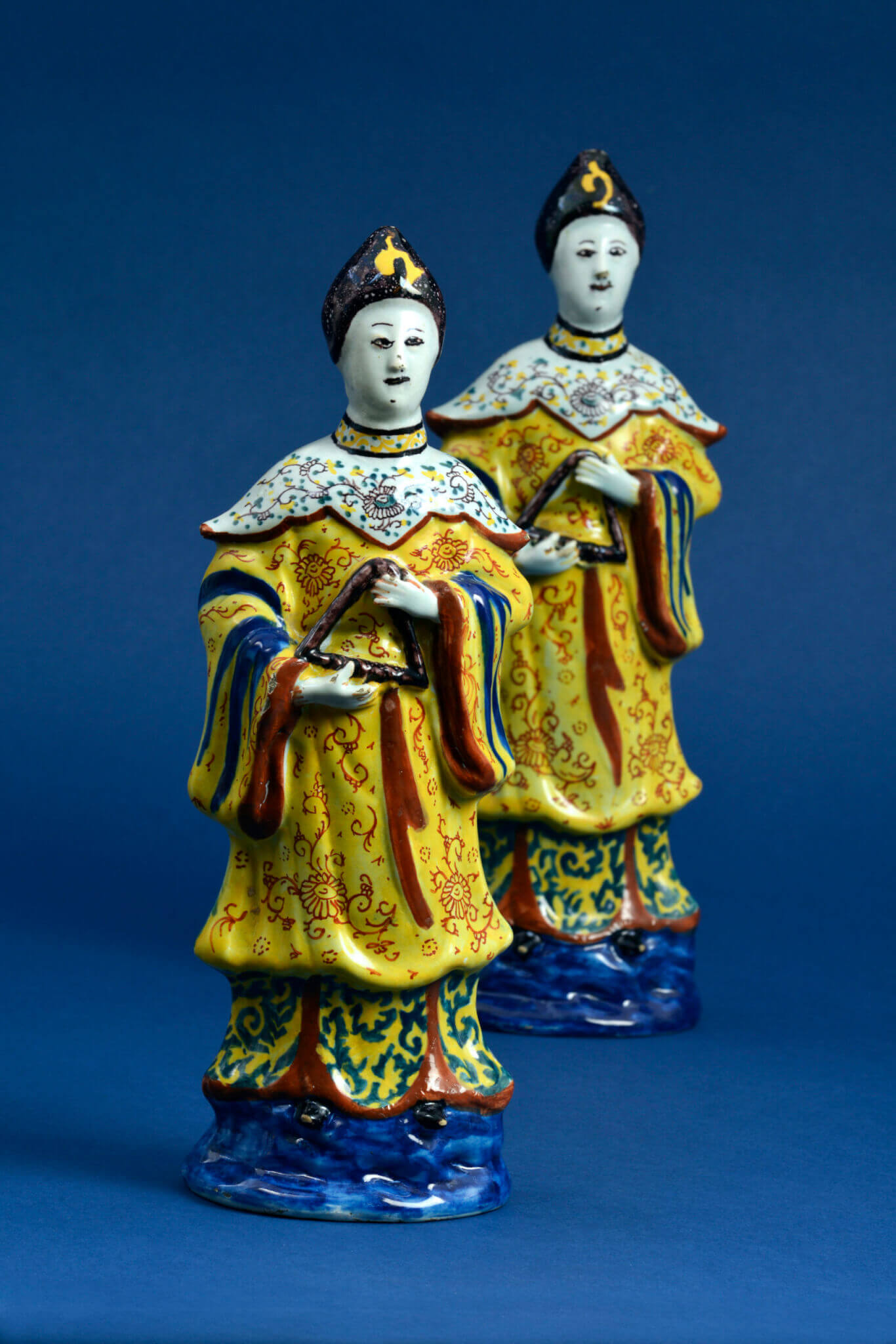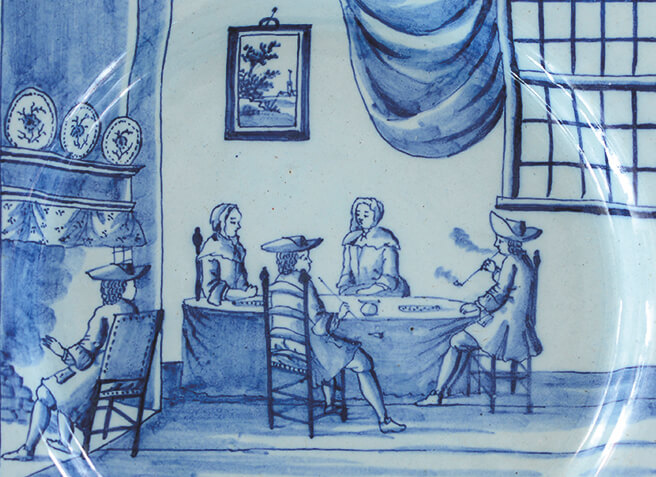Parasols on Delftware
The Dutch East India Company (VOC) imported tens of millions of pieces of porcelain during the two centuries of its existence (1602-1799) and flooded the country with Chinese and Japanese tablewares. The Chinese porcelain introduced exotic imagery, such as depictions of dragons, temples and emperors. One can only imagine how enthralled the Dutch consumers must…


